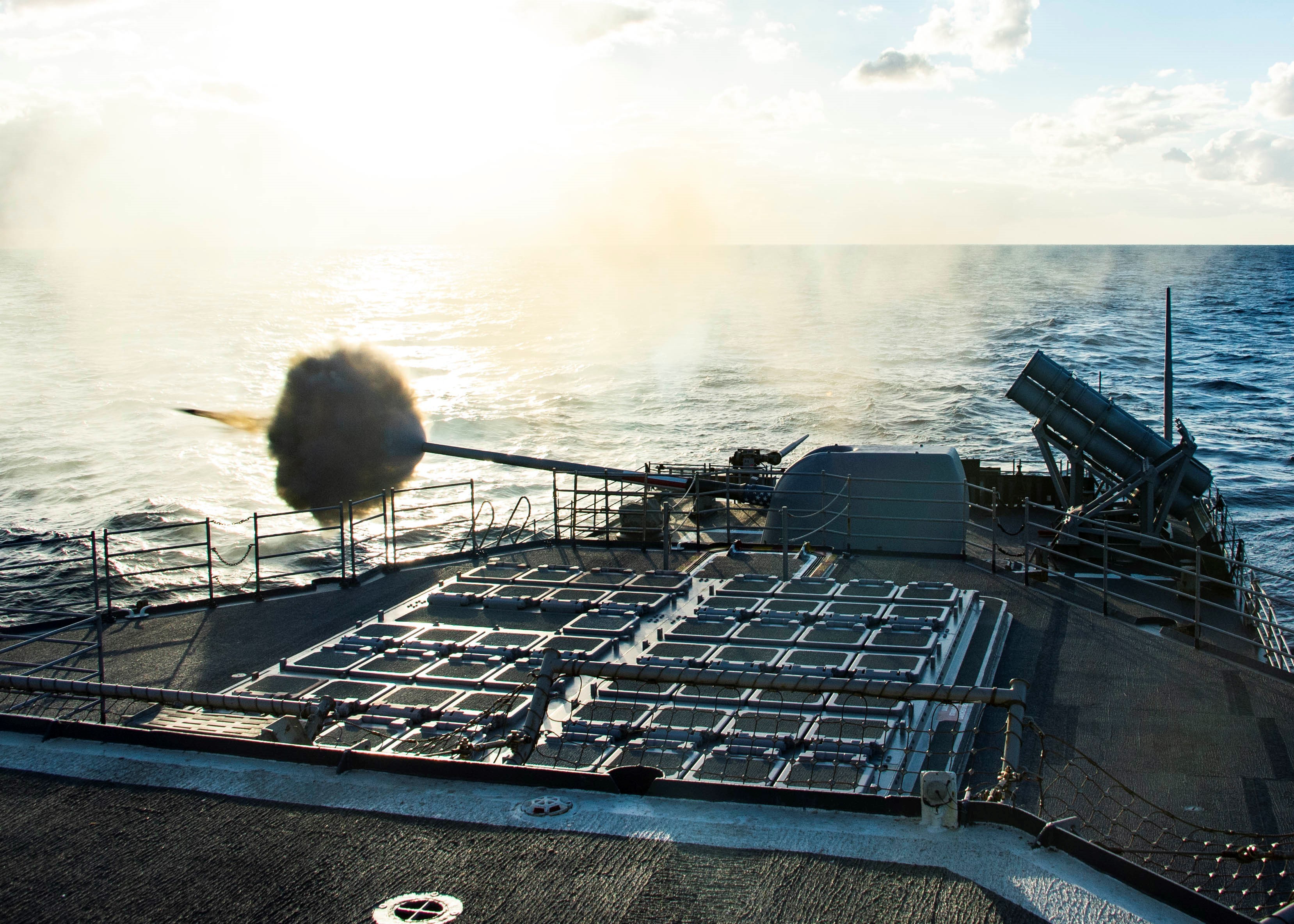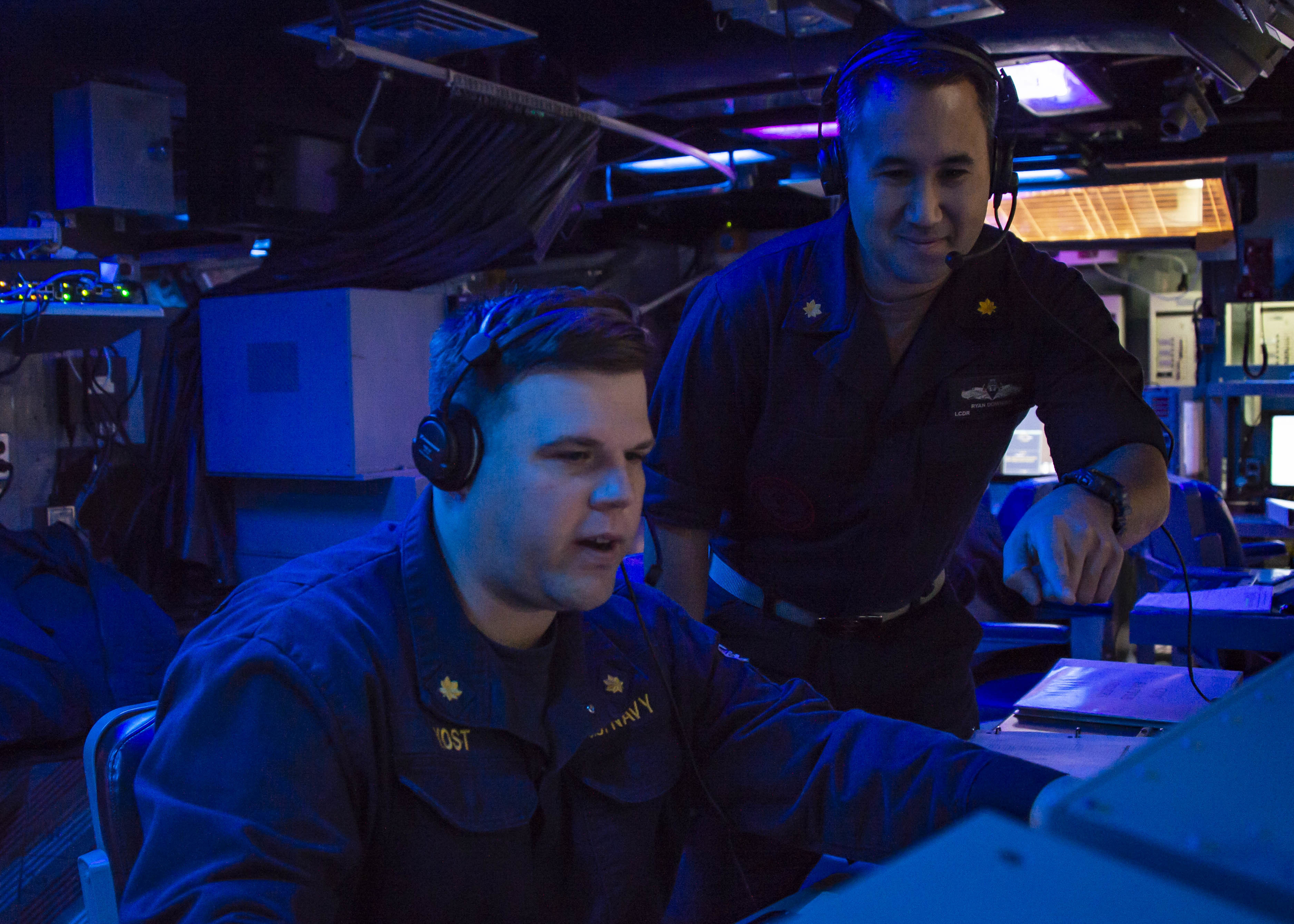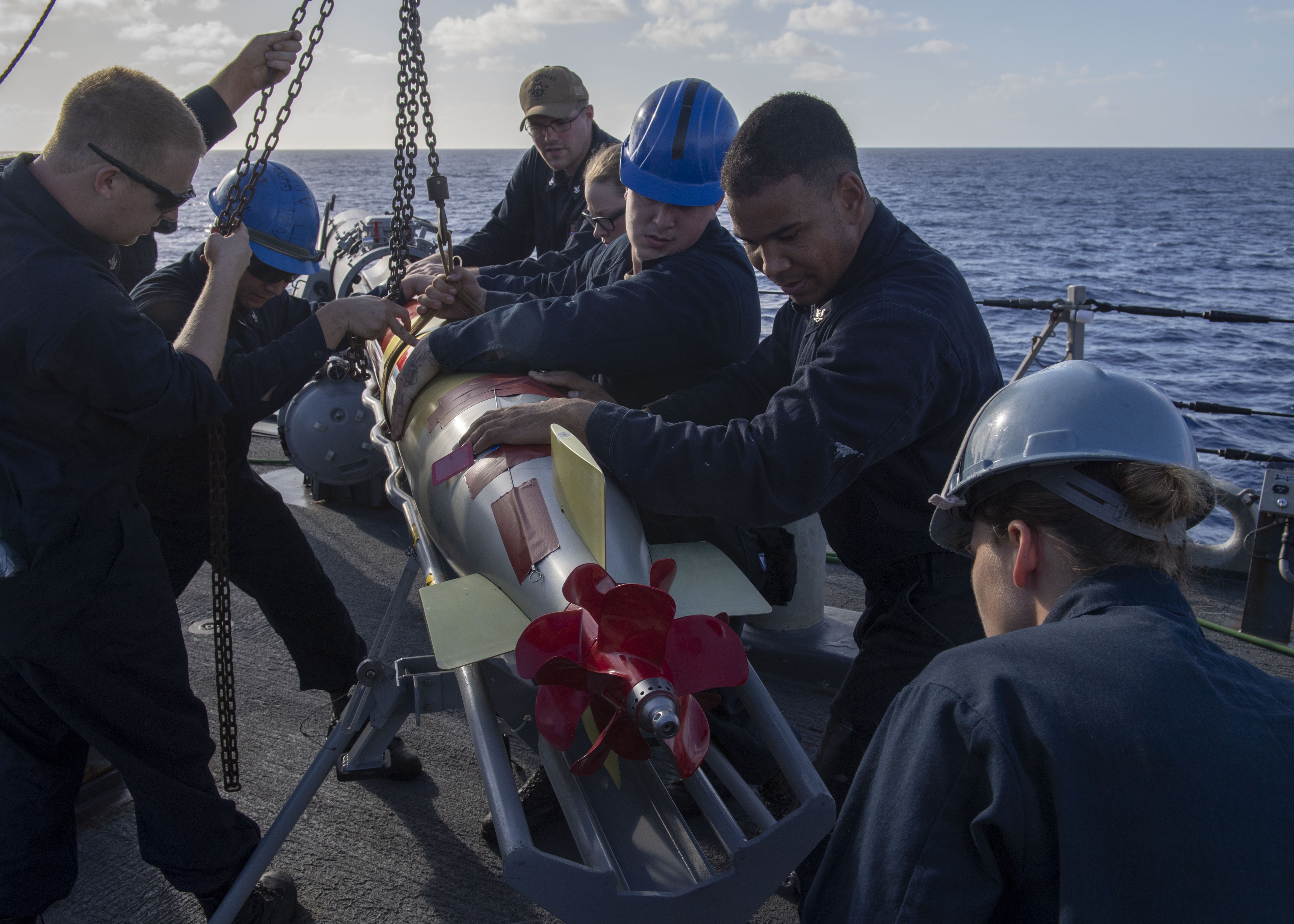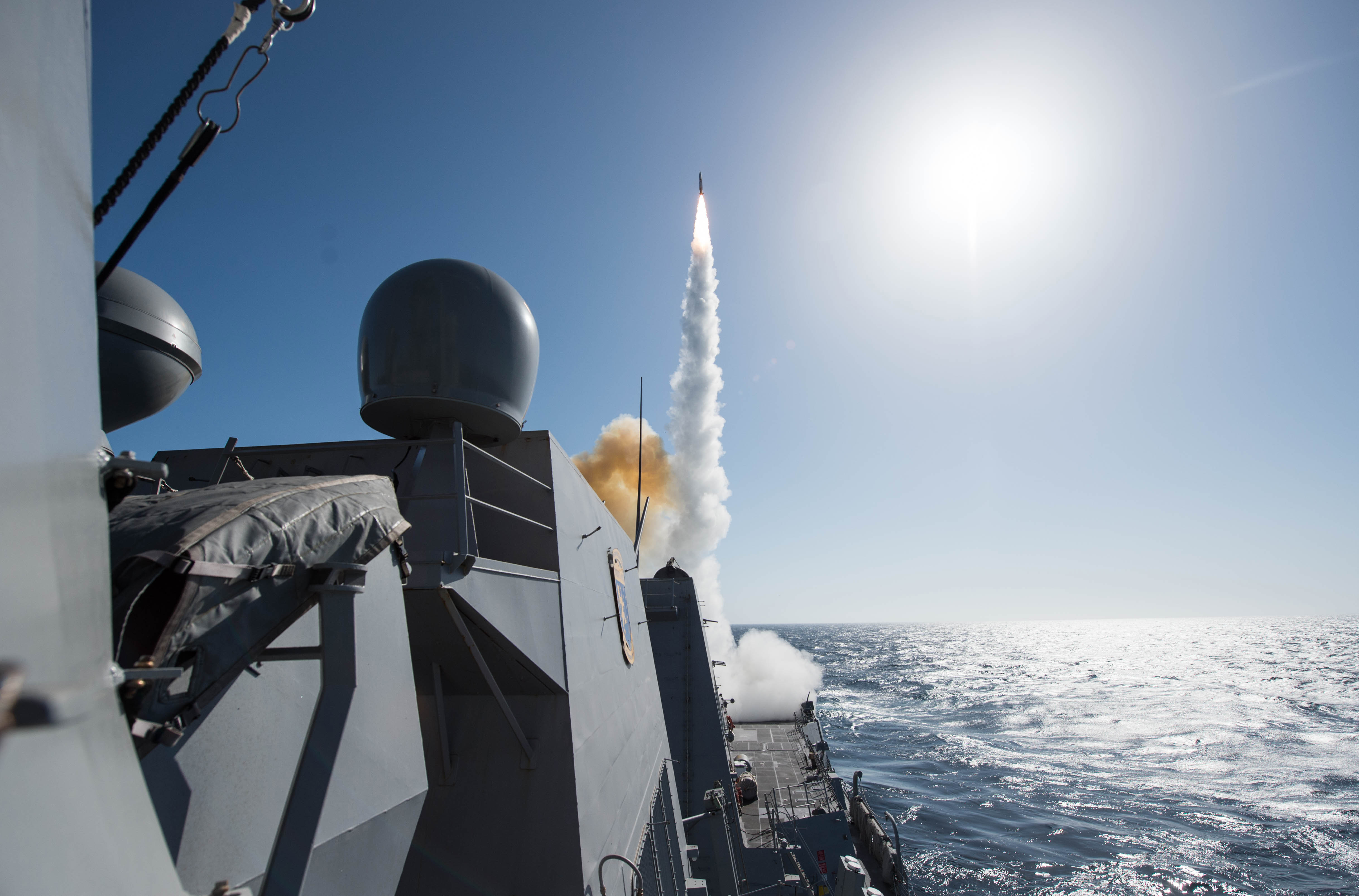
SAN DIEGO, Calif. – Last year, the Naval Surface and Mine Warfighting Development Center accomplished a host of firsts in its advanced training activities for surface ships. This year, SMWDC intends to continue to solidify its role in the Navy through more tactical development and a focus on the mine warfare portion of its portfolio.
SMWDC, not even four years old yet, has already made itself an indispensable part of surface ship training. In 2016 it hosted the first-ever Surface Warfare Advanced Tactical Training (SWATT) event; in 2018 it brought SWATTs to the East Coast; and starting this year, every single ship will go through a SWATT event and a live-fire missile shot before being allowed to deploy, SMWDC deputy commander Capt. Chris Barnes, told USNI News.
SMWDC plans to host six SWATTs this year and seven in 2020, Barnes said, which will cover every single carrier strike group and amphibious ready group deploying. Other ships – those going on independent deployments or with a small surface action group, for example – will also be incorporated into an ARG or CSG SWATT, following an announcement from U.S. Fleet Forces Command and U.S. Pacific Fleet that every ship be get its full entitlement of basic, advanced and integrated training, regardless of whether it will deploy in a group or solo.
“To me, every ship deserves it, so now it’s mandated and we’re going to execute it,” Barnes said.
The Navy’s “Live Fire with a Purpose” program has also been lumped in with SWATT, Barnes added, creating an effective way to ensure that every ship can fire its missile system during advanced training in a meaningful strike group scenario.

With SMWDC having hit its stride with these advanced training events, the organization now wants to better measure their effectiveness and tighten the feedback loop between the training community and deployed units to ensure the training covers the right real-world scenarios.
Barnes said SMWDC is working with a group from CNA to measure the success of SWATT and how it affects ships’ performance once they enter the final Composite Training Unit Exercise with an air wing or embarked Marines.
There is currently no metric used to measure SWATT’s impact, but Barnes said subjective feedback has been positive.
Training organizations “Strike Group 4 and Strike Group 15 are grading our homework, and what the feedback from them is is that the ARGs and the CSGs are showing up to COMPTUEX more ready than they had been in the past, and the only thing that’s changed is adding that SWATT event. So we’re taking that as a positive feedback,” Barnes said.
“They’re seeing that the ships are better prepared to do things – they’re better prepared to do [anti-submarine warfare], they’re better prepared to do surface warfare … which means they don’t have to spend a lot of time on the basics (at the start of COMPTUEX). We’re knocking that stuff out for them and they can get to the higher-end fight.”
CSG-4 and CSG-15 collect a great deal of data during COMPTUEX, and Barnes said SMWDC is now looped in with their data analysis process with experts at Naval Surface Warfare Center Corona. Any deficiencies that are repeatedly found during the final test and certification event before deployment can and should be addressed during the earlier SWATT training event, Barnes said, and SMWDC is looking throughout the entire training and testing process for any systematic weaknesses that it can better address during SWATT.
“Every time we do a SWATT event, we’re learning ourselves,” Barnes said.
“So the SWATT process is an evolving process, and we’re always looking to deliver credible combat power – we’re in a great power competition, is the term today – our goal is to increase lethality, increase the warfighting proficiency of those ships and doing that through SWATT.”

If the SWATT events are the most visible way SMWDC is involved in the fleet, Barnes said the command hopes to strengthen its three other lines of effort that connect SMWDC to the Navy’s operational surface fleet: tactics development, operational fleet support and experimentation with future requirements and capabilities.
On the tactics development side, Barnes said “we own all the TTP (tactics, techniques and procedures) that correspond to surface warfare, so it’s about 150 documents. So we are in a constant review process, but we have everything prioritized – so as an example, our goal is that no emerging technology shows up to a ship without at least a draft TTP.”
SMWDC produces warfare tactics instructors (WTIs) that fall into warfare categories – integrated air and missile defense, anti-surface/anti-submarine warfare and amphibious warfare – but each is also assigned a more specific subject matter to specialize in. When SMWDC is informed about an emerging technology in development, a WTI who specializes in that tech area is assigned to work closely with the industry developer and write draft tactics as the tech is being designed and tested. Once the tech arrives on a ship for prototyping work or fielding, the WTI stays with the technology to help test out those TTPs and refine them as needed based on the crew’s feedback.
Barnes said SMDC also reviews and updates TTPs for existing systems as needed based on lessons learned, new software increments and changes to the threat environment. Each ship going through SWATT would be taught these updated TTPs, ensuring that deploying units know the latest and greatest ways to use the systems they’ll deploy with.
On the operational support side, SMWDC has already been involved in some high-profile events, including supporting the destroyers involved in a multinational land attack on Syrian targets in April 2018.
Barnes said the integrated air and warfare defense division fields about 200 requests for help a year, many of them simple questions but some requiring research with experts at NSWC Dahlgren, Johns Hopkins University Applied Physics Lab and others. The sea combat and amphibious warfare divisions also field some questions, but far fewer than IAMD. These requests may come when a crew tries a tactic and it doesn’t work, if they identify a gap in TTPs and don’t know how to address a specific problem, or if they need help setting their radars or weapons for a particular environment they are facing.
“The answer is never no: if the ship’s out there on the tip of the spear and they need help setting up their weapons system or verifying some settings or whatever it may be, we take that information, we run it in the lab, we verify it or validate it as best we can, and provide them final feedback. We do that every day,” Barnes said.

A final area for SMWDC to dive into in 2019 is mine warfare. With three divisions already producing WTIs, the mine warfare division will be the last to begin producing its first five WTIs this summer.
Barnes said as the Navy transitions from the Avenger-class MCM ships to the Littoral Combat Ship, the WTI program will focus on LCS operations but will also include some training in the other two legs of the Navy’s mine warfare triad: expeditionary mine countermeasures units in the explosive ordnance disposal (EOD) community and air-based mine countermeasures from helicopters.
Barnes said the timing of this summer’s mine warfare WTI class is important because “about two years or so after they graduate, the first LCSs with mission packages for MCM will be going forward, and we want to have them onboard those ships.” In fact, the idea is to have one “post-production WTI” – a sailor who went through the WTI training program at SMWDC and then rotates into another fleet job, carrying their training and expertise with them into the fleet – onboard each LCS with a mine countermeasures mission package. The Navy’s current model would have eight or nine ships with 14 or 15 crews focused on MCM, and Barnes said SMWDC would have to train five to 10 WTIs a year to support that footprint in the fleet.
Overall, SMWDC is growing up to a staff size of about 550 personnel by 2021, with open billets now and the organization looking for more sailors to apply for the WTI program.





